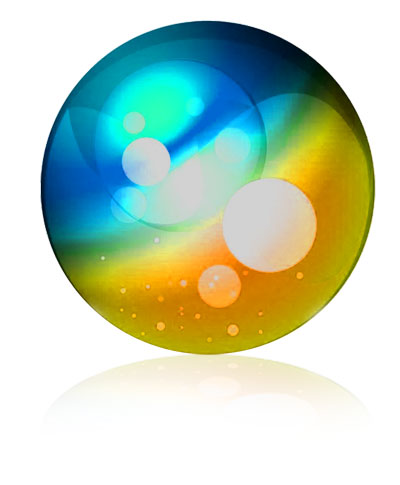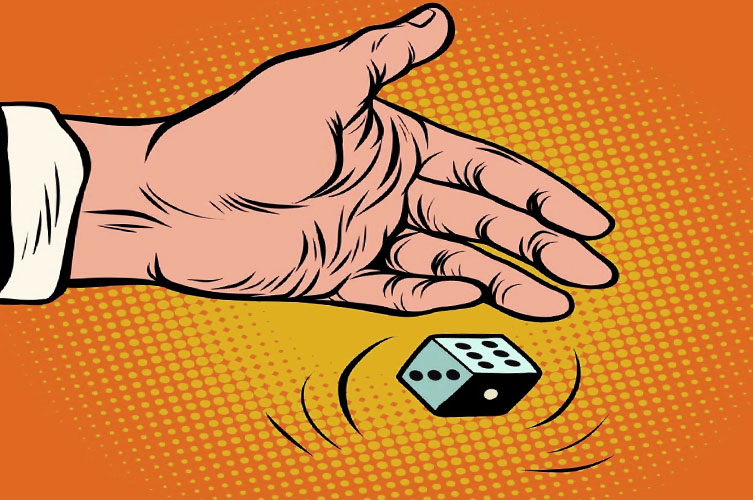Table of Contents
In this article we will learn about how to do math with things that only occasionally occur. They may or may not. We will learn about Probability. Usually in mathematics we deal with things that always happen the same way. They are fully convinced. Like if you add 1 and 1 you will always get 2. If you multiply 2 and 3 you will always get 6.
There is no uncertainty at all. But in the real world things cannot always be predicted. Take a coin toss for example. We cannot predict whether it is head or tail. This is unpredictable or random, and that is why some people will do it. flip a coin to help decide which of the two things to do.
That’s how I make every decision in life. Why am I not surprised? Oh no!. [lightning strike]. Good luck. But even though we don’t know what will happen to each coin flip. we know a few things about that. We know that with a fair coin toss, heads tend to appear as tails.
Concepts of Probability
The probability of an event (such as getting a head or getting a tail). that is, a value that tells us HOW SMART that event will occur. With our coin toss, because each side is the same as possible. and there are only two sides to a coin. if we flip a coin many times.
we should expect that about half the flips will become heads. and about half the flips will become tails. And that means the possibility of turning the head is small. and the possibility of flipping the tail is also half. Let’s look at this in a little more detail in something called the Probability Line. This is a number line that ranges from 0 to 1.
Zero probability means that an event cannot occur, it is not possible. And probability 1 means that an event will inevitably occur, that is certain. That’s why the probability line only goes from 0 to 1. An event is impossible less than impossible. and that can’t be more than certain. One and a half chances (like our coin tosses).
Means that an event is as likely to occur as NOT happened. A probability of less than half means that an event is not possible. and a probability greater than half means that an event is most likely to occur. Oh, and aside from fractions. it’s also common to write probabilities as decimals or percentages.
because you can easily convert between the three. Probability of 0 is equal to a 0 percent chance of something happening. a one-half probability equals a 50 percent chance for something to happen. and probability 1 equals a 100 percent chance of something happening.
Now you know how coin tosses work. let’s look at an example of an event where it’s impossible to use something a little more complicated than a coin. Let’s look at the dice. A standard die has 6 sides numbered 1 to 6. When you roll them, one side will be as likely as the other side. Sounds like flipping a coin, right?
Each side of the dice will most likely appear like the others. and each side of a coin is as likely as the other side. So you might expect that the possibility of rolling 3 is 50%. But remember, with a coin toss there are only 2 possibilities: head or tail. With dice there are 6 possibilities. And that will make a difference in the possibilities.
One way to think about it is that surely one of the six sides will land facing up. which is probability 1 (or 100%). But because ONLY one side can face upward for a given roll. we must divide that value among all possibilities.
Probability
In the case of a coin toss, because there are only 2 possibilities. we have to divide the probability by 2. 1 divided by 2 which is half, (ie decimal 0.5 or 50%).
But with a die, we need to evenly distribute probabilities between 6 possibilities. 1 divided by 6 which is one sixth which is equivalent to 0.167 (or 16.7%). So it’s here in our probability line. That means there is no way I would roll 3 for example. but the possibility is the same as rolling another number.
And because all 6 numbers have the same probability. each number must appear as often as the others. To see if they do, I’ll do a couple of trials. That’s a very good argument. Allow me to negotiate. Guilty! Actually, when dealing with probability. an experiment (which can also be called an experiment). which is a process that has random results.
Like tossing a coin or throwing a dice or spinning a spinner. And the result of the trial is what happened in that particular trial. Like turning heads, or rolling 3. So I will do some experiments by rolling the dice several times. and keep track of the number of times I dial each number. Ah ha!
You say that each number will appear as often as the other numbers. But look! There are more 2s here than 5s. How do you explain that? Remember, we deal with random things.
They are unpredictable. We cannot know exactly what will happen, only what will happen on average. So now I have to calculate the average ?
Now, when we say “average” we mean it. the more experiments you do, the closer you are to the expected probability. Continue to pay attention. There. Now we have done many experiments. You can see that our total is far closer to what you expect.
I guess you might be right. That’s one of the most important things to remember about probability. If you only do a few experiments, the results may not end very close to what you expect. In fact, they could have gone!
Read also : Magic Formula
But if you do more experiments, you increase your chances of achieving the expected probability. There is something else I must show. Remember, the probability of flipping the head is 1/2 and the probability of flipping the tail is 1/2.
The probability to roll 1 is 1/6, and the probability to roll other numbers on the mold is 1/6. If you add the probability to flip a coin, you get 2/2 or 1. And if you add the probability to roll the dice, you get 6/6 which is also 1. And it’s not just a coincidence.
If you add up the probabilities of all possible trial results. the total will be 1 or 100%. because it’s certain that at least one of these possibilities will occur. Let’s look at a few more examples. For this example we will use a spinner. If we have spinners with only six sectors of the same size.
Dice Probability
The probability will be exactly the same as the dice. So we want a few more sectors. There, it is more like that. Now we have 16 sectors of the same size. So, what is the probability of spinning 12 ?. Like the dice, we have to divide 100% among the six possibilities. we will do the same thing now, but we will divide it into 16 possibilities.

But what if we color several sectors with different colors. and we want to know the probability of spinning a certain color ?. Now we have 5 blue sectors and 11 yellow sectors. So what’s the probability of turning blue?
Remember how with coin toss, we end up with fractions 1 of 2. and with die roll we get fractions of 1 over 6. In both cases we have 1 as a numerator. And that’s because we are only interested in ONE of the possible outcomes. like the probability of turning heads or the probability of number 3 being rolled.
But in this case the top number from our faction is 5. because one of these 5 sectors will give us the color we want. And the bottom number will still be the total number of possibilities. which is 16 because that’s how many total sectors we have.
So the probability of turning blue is 5/16 or around 31%. That’s still considered impossible. but it is more likely than to dial certain numbers. And this method will work to find out the probability of each event.
You only make fractions with numerators as the number of results that meet your needs. and the denominator as the total number of possible outcomes. Let’s try the same method to find the probability of spinning in yellow.
Our top number must be 11 because there are 11 yellow sectors. And our lowest number should be 16. So, the possibility of spinning yellow is 11/16 or around 69%. Now we finally have a probability that is considered possible.
And that makes sense, because you can see by looking at our spinners. that it’s more likely to spin yellow than blue. And you will see, if we add 5/16 and 11/16 we get 16/16 or probability 1. So that’s a good sign that we’re doing it right.
Marbles Probability Example
Let’s look at another example. Suppose we have a bag of marbles. There are 3 green marbles, 7 yellow marbles and 1 white marble.

If we mix it and take out random marble. what is the probability of being green ?. Well, the top number of our probability fraction is 3. because there are 3 green marbles so there are 3 results that give us what we want.
And the bottom number is 11 because there are a total of 11 marbles we might be able to pull. So the possibility of removing green marble is 3/11 or 0.27 or 27%. It’s here in the probability line. That means it’s impossible. And that makes sense because you can see it. less likely to issue a green marble than others.
Let’s try this again to calculate the possibility of removing the yellow marble. This time the numerator of our faction is 7 because there are 7 yellow marbles. The denominator is still 11 because the total is still 11 marbles. So the possibility of removing yellow marble is 7/11 or 0.64 or 64%. … another example of an event that might occur.
how about removing the white marble ?. Well, the top number will be 1 because there is only one white marble. And the bottom number is still 11. So the possibility of removing white marble is 1/11 or 0.09 or 9%. … very impossible. And if we add this probability, we get 11/11, or 100%, as we expect.
Good! So you have to have a pretty good handle on basic probabilities now. You only need to remember to make a fraction. the numerator becomes the number of results that gives you what you want.
The denominator becomes the total number of possibilities. And we learned about Probability Lines. and that the probability must not be less than 0 or more than 1 (or 100%).
We also learn that the more experiments or experiments you do. the closer your results will be to the expected probability. Of course the way to become an expert at that is to practice. So make sure to do a lot of problems yourself. As always, thanks for watching Math Antics and I will see you later. And I punish you for. Learn more at www.mathantics.com.

